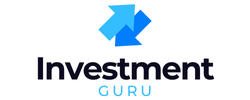Financial freedom isn’t a dream reserved for the ultra-rich. It’s a reality waiting to happen for anyone willing to take control of their money. And the first step? Learning how to budget for financial freedom.
A budget isn’t about restriction—it’s about intention. It gives you the power to direct every dollar toward your goals instead of letting money control you. Whether you’re aiming to escape debt, build passive income, or retire early, a rock-solid budget is your launchpad.
Here’s your complete blueprint for budgeting your way to financial independence in 2025 and beyond.
Table of Contents
Understanding Financial Freedom
Financial freedom means having enough income—passive or active—to support your lifestyle without being tied to a 9-to-5 job. It’s about options, peace of mind, and control over how you spend your time.
There are levels to it:
- Security: You can cover basic living expenses
- Independence: You can choose whether or not to work
- Abundance: You can live your dream life without money stress
Budgeting is the bridge to all three.
Why Budgeting Is Non-Negotiable
No matter how much you earn, if you don’t track and plan your money, you’ll never master it. Budgeting brings:
- Clarity: Know where your money goes
- Control: Make intentional financial decisions
- Confidence: Feel empowered about your future
Without a plan, your financial goals will always remain out of reach.
Step One: Define Your Financial Freedom Goals
Before crunching numbers, define your “why.” Ask:
- Do I want to retire early?
- Am I saving for a house, travel, or time freedom?
- How much passive income do I want?
Set SMART goals (Specific, Measurable, Achievable, Relevant, Time-bound) to guide your budgeting.
Step Two: Track Every Dollar You Spend
You can’t manage what you don’t measure. For 30 days, write down every expense:
- Use a spreadsheet, journal, or app like Mint or YNAB
- Categorize spending: rent, food, subscriptions, etc.
- Identify spending leaks
Tracking opens your eyes—and your options.
Step Three: Choose a Budgeting Method

There’s no one-size-fits-all. Pick what works for you:
- Zero-Based Budgeting: Every dollar has a job
- 50/30/20 Rule: 50% needs, 30% wants, 20% savings
- Envelope System: Cash-based method for discipline
- Reverse Budgeting: Pay yourself first, spend the rest
Try one method for 90 days, then adjust as needed.
Step Four: Analyze and Categorize Expenses
Split your spending into:
- Fixed Expenses: Rent, insurance, loans
- Variable Expenses: Groceries, gas, entertainment
- Discretionary Expenses: Dining out, shopping, Netflix
This helps you prioritize and identify areas to trim.
Step Five: Slash Unnecessary Spending

Don’t cut joy—cut fluff.
- Cancel unused subscriptions
- Negotiate bills (yes, it works!)
- Meal plan to avoid food waste
- DIY instead of outsourcing
You don’t need to live on rice and beans—just spend smarter.
Step Six: Set Up a Savings Plan
Aim for three types:
- Emergency Fund: 3–6 months of expenses
- Sinking Funds: For planned expenses (vacation, car repair)
- Freedom Fund: For investing and big financial goals
Automate transfers so savings happen before spending.
Step Seven: Prioritize High-Interest Debt
Debt kills your budget and your dreams.
- Focus on credit cards first
- Use the debt avalanche (highest interest) or snowball (smallest balance) method
- Pay more than the minimum
Freedom starts with zero debt.
Step Eight: Automate Your Budget
Let tech do the heavy lifting:
- Set auto-pay for bills
- Auto-transfer to savings and investments
- Use budgeting apps to track everything in one place
Automation keeps your plan on autopilot—even when life gets busy.
Step Nine: Budget for Investing
Saving is good. Investing is essential.
- Open a Roth IRA or 401(k)
- Start with index funds or ETFs
- Invest consistently, even if it’s $50/month
Compound interest turns small efforts into massive wealth over time.
Step Ten: Build in Flexibility

Life happens. Your budget should bend—not break.
- Leave room for fun and surprises
- Adjust categories monthly based on real life
- Forgive mistakes and stay on track
A flexible budget is one you’ll actually stick to.
Step Eleven: Review and Adjust Monthly
Every month, do a budget check-in:
- What went well?
- What went over?
- What needs to change?
Reflection creates improvement. Improvement creates results.
Step Twelve: Celebrate Milestones
Hit a savings goal? Paid off a credit card? Celebrate!
- Treat yourself (within budget)
- Share wins with friends or accountability partners
- Reflect on how far you’ve come
Celebration keeps motivation high.
Budgeting Tools That Make It Easier
Top tools in 2025:
- You Need A Budget (YNAB) – Best for zero-based budgeting
- Mint – Easy, free, automated
- EveryDollar – Clean and beginner-friendly
- Goodbudget – Great for envelope budgeting
- Notion or Excel – Customizable and visual
Choose one that matches your personality and needs.
Common Budgeting Mistakes to Avoid
- Ignoring small expenses
- Forgetting irregular bills
- Budgeting too tightly
- Comparing to others
- Giving up after one bad month
Progress > perfection.
How to Budget on a Low Income
- Prioritize essentials: shelter, food, utilities
- Use cash for variable categories
- Find side hustles or gig work
- Eliminate toxic debt first
- Celebrate small wins
Budgeting is even more powerful when money is tight.
Budgeting for Families

- Have monthly money meetings
- Use shared apps like CoPilot or Honeydue
- Align spending with shared values
- Get kids involved with visual savings goals
Budgeting is a team sport.
Budgeting for Freelancers and Gig Workers
- Base budget on your lowest earning month
- Separate business and personal expenses
- Set aside 25%–30% for taxes
- Build a variable income buffer fund
Budgeting brings stability to inconsistent income.
Incorporating Financial Goals Into Your Budget
Each goal should have its own category:
- Debt payoff
- Emergency savings
- Retirement contributions
- Down payment fund
Your budget is your vision—turned into action.
How to Stay Motivated on a Budget
- Use visuals (charts, trackers)
- Join budgeting communities (Reddit’s r/personalfinance)
- Listen to podcasts (ChooseFI, Afford Anything)
- Reward progress
Motivation multiplies when you see results.
Real-Life Examples of Budgeting Success
- Marcus, a teacher, reached financial independence by 40 using a 50/30/20 budget and side hustling on weekends.
- Jenna and Alex paid off $80,000 of debt in 3 years by meal prepping, using a zero-based budget, and sticking to monthly check-ins.
- Priya, a single mom, built a $25,000 emergency fund while earning under $50K/year using envelope budgeting.
Proof that budgeting works—for anyone.
Conclusion
Learning how to budget for financial freedom isn’t about restriction—it’s about unlocking the life you’ve always wanted. A great budget aligns your money with your values, fuels your goals, and creates peace of mind.
Whether you’re starting from scratch or refining your system, remember: the best time to budget was yesterday. The second best time is now. Your path to financial freedom begins with your next decision.
FAQs
Do I need to earn a lot to budget for financial freedom?
No. Budgeting works at any income level. It’s about spending with intention.
How much should I save monthly?
Start with 20% of your income and adjust based on your goals.
What if I hate budgeting?
Try a simple method like the 50/30/20 rule or use an app to automate it.
Can I still enjoy life while budgeting?
Yes! A good budget includes fun money. It’s about balance, not deprivation.
How do I stick to a budget long term?
Review it monthly, automate where possible, and celebrate milestones.


